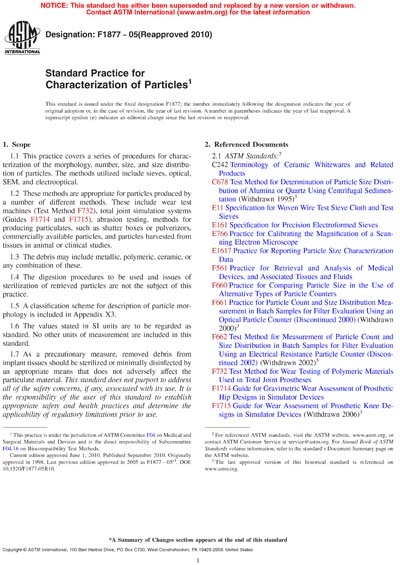Historical
ASTM F1877-05(2010)
Standard Practice for Characterization of Particles
1.1 This practice covers a series of procedures for characterization of the morphology, number, size, and size distribution of particles. The methods utilized include sieves, optical, SEM, and electrooptical.
1.2 These methods are appropriate for particles produced by a number of different methods. These include wear test machines (Test Method F732), total joint simulation systems (Guides F1714 and F1715), abrasion testing, methods for producing particulates, such as shatter boxes or pulverizors, commercially available particles, and particles harvested from tissues in animal or clinical studies.
1.3 The debris may include metallic, polymeric, ceramic, or any combination of these.
1.4 The digestion procedures to be used and issues of sterilization of retrieved particles are not the subject of this practice.
1.5 A classification scheme for description of particle morphology is included in Appendix X3.
1.6 The values stated in SI units are to be regarded as standard. No other units of measurement are included in this standard.
1.7 As a precautionary measure, removed debris from implant tissues should be sterilized or minimally disinfected by an appropriate means that does not adversely affect the particulate material. This standard does not purport to address all of the safety concerns, if any, associated with its use. It is the responsibility of the user of this standard to establish appropriate safety and health practices and determine the applicability of regulatory limitations prior to use.
ASTM International [astm]

